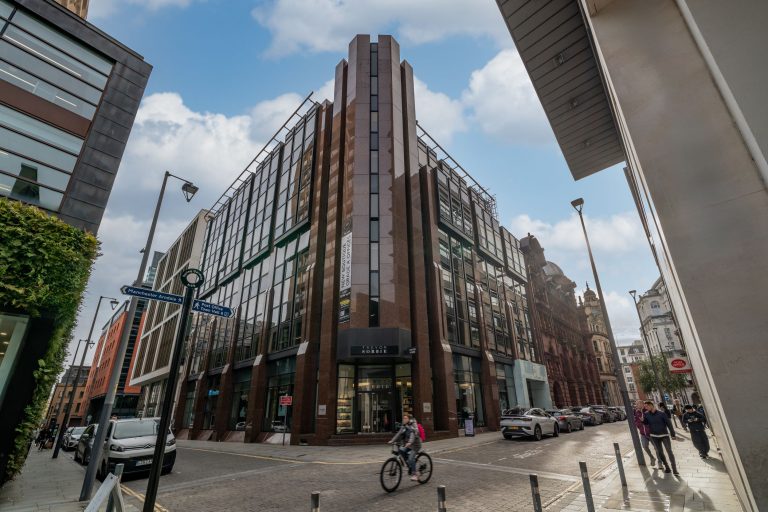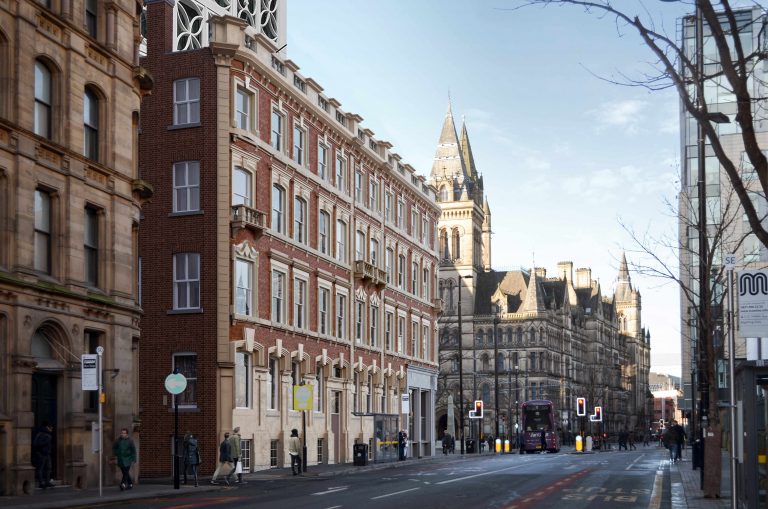It’s more than just a desk, it has been for a while..
Rob Prescott | 27 April 2020
The immediate effects of COVID-19 are clear for all to see, and with the lockdown being increased for a minimum of 3 weeks, we are going to have to adapt further to the situation over the coming weeks. The medium to longer term effect of this pandemic will be significant, with some economists predicting a double-digit drop in GDP at the end of the second quarter.
The swift implementation of the lockdown measures meant all businesses that could work from home, were asked to do so with immediate effect. Some businesses were already set up to do so, with effective cloud computing systems already in place, others had to quickly establish the necessary technological wizardry that allows staff to work from home. Overnight, millions of people were now working remotely.
This forced environment will reveal to some businesses the benefits of home flexible working and we have no doubt there will be some who believe this is a beneficial change for their business.
Amongst the various press articles and thought leadership pieces, one topic that stands out is the messaging surround the future of the workplace. We believe that an occupiers approach to their workspace is as unique as the business itself – no single solution can apply to everyone. This is OBI’s thoughts on this hot topic.

Workspace has already changed:
Before COVID-19, landlords and developers had already started to focus on delivering workspaces designed around health, wellbeing and productivity. The next phase of technological advancements in new workspace buildings will be focused on delivering “smart buildings” with the aid of 5G network capacity. Focused on understanding the minutia of the workspace environment and allowing its occupiers to implement subtle changes based on data collection to improve the experience of its users whilst delivering optimal energy efficiency.
The occupier centric approach to workspace is not a new concept, with landlords and developers being aware of this for some time. The increase in ways to quantify these initiatives are now common, examples include the WELL accreditation. Promoting health and wellbeing is important for occupiers and there is a sharp focus on creating environments that are supporting this requirement.
Provision of additional on-site amenity is now commonplace, despite the loss of valuable income producing floor area. Modern workspace buildings are well thought-out, curated from the ground up; to cater for a range of needs to include break out space, high quality meeting space, collision space and town-hall space, balconies, yoga studios, on-site gyms, the list goes on. These introductions are there to deliver a working environment that ensures staff are physically and mentally supported, ensuring they are engaged and productive with ample opportunity to interact with the environment, the days of sitting at a desk from 9am to 5pm are a thing of the past for most modern businesses.

Landlords and developers have introduced community managers, apps and initiatives across their portfolios as they recognise occupiers value the importance of being able to share enterprise throughout their occupier network. This allows businesses to expand their network, seek business opportunities and attend events with other likeminded companies to share innovation and develop working relationships.
It is clear that we are likely to return to working on a phased basis rather than all at once. This will force us to review how we manage additional onsite amenities that attract elevated foot traffic in the short to medium term, but they will always be part of the modern workspace environment, helping
Agility already exists:
Where possible, businesses already accommodate agile working as part of their approach to managing work-life balance. This is a very subjective topic, as people’s personal situations vary, individual needs and circumstances will dictate how much agility they would like from an employer and we have seen a significant change for the better in this arena in recent years. Work-life balance sits high on the list of priorities for a large percentage of the populous, this was the case long before COVID-19.
The way in which occupiers fit-out their new workspaces has evolved to accommodate an agile approach to working. The majority of the world’s largest corporations have done away with personal offices for senior staff, embracing the open plan and agile approach.
· individual desks have been replaced with hot-desking and lockers
· employers deliver different zones offering sit stand desking, quiet zones, team zones etc
· break out and wellbeing provision within the demise has increased significantly to provide much more than a basic kitchen / brew station facility
· touch down and collaboration areas are designed to encourage movement within the workspace and to ensure people are not sitting at their desks all day, operating in silos.
Flexible working hours and home working are now commonplace amongst many businesses. Whilst there are still a high percentage of employers who do not believe this approach is the right thing for their businesses, the fact that they have been forced into this “trial” period as a result of the pandemic may lead to an understanding that staff can in fact work efficiently from home for a percentage of the week, and that this perk could be included in their strategy for delivering a sufficient work-life balance
for their staff. Working from home 1 or 2 days a week and having the luxury to “flex” the normal working hours to avoid the rush hour traffic are likely to become the norm, especially now everyone has been forced to “level-up” their homeworking set-ups. Face to face meeting and personal interaction will remain as important as it ever was, despite the inevitable changes to the current status-quo.
A reflection of self:
Modern workspace is not supposed to hold people captive and ensure a level of surveillance, instead it is about employers trusting their staff as well as developing different management skills to maintain productivity.
Workspace design reflects a business’s culture, ethos and principles that differentiate them from their competition. The meticulous detail that goes into designing a high-quality workspace environment, be it space for small start-ups to large corporates, focuses on delivering an environment that reflects the business living in it and allows its staff to function at an optimal level.
The aims of a workspace are to firstly promote staff wellbeing and deliver efficiency, in an environment that optimises output, but also as a shop window for existing and future clients and employees. Designing and delivering an individual eco-system where people are excited to come to work and not in a rush to leave remains the utopia.
Pitching and presenting to new clients in a well-designed workspace will be as important, or more important than the contents of your pitch. Face to face pitching will always be more impactful than online substitutes. First impressions count and this will always be the case, now and long after COVID-19.
Flexibility is already an essential component of real estate strategy:
The need to accommodate flexibility into real-estate strategy has been a key component of occupier’s approach to workspace since the last recession but particularly over the past 2-3 years. This is as important to large corporates as it is to smaller business. Post COVID-19 occupiers may move this requirement further up the priority list, but this was already happening, and the market has adapted to accommodate this change.
The increased take-up from managed workspace operators, landlords offering turn-key solution and “easy in” packages with transparent pricing models is a reaction to the demand for this type of space. This agility has been built into the workspace market over a number of years and the range of choice for tenants has never been greater.
The demand for these kinds of spaces has been steadily increasing which demonstrates a preference amongst even single person businesses, to align themselves with a workspace rather than working from home. This is undoubtedly as result of the wider benefits that going to “work” brings.
The word flexibility does not just apply to lease structures but across the wider piece. The flexibility of the office is also shown by the way people dress in 2019. Even large global commercial property companies have allowed their staff to wear clothing appropriate for the day’s tasks. Pin stripe suits and red ties are becoming more a thing of the past in an effort to encourage diversity and to ensure staff feel like they can control how they approach their working day. This further demonstrates how the workspace has evolved to suit a modern outlook on life, something that would have bene unheard of only 5 years ago.

Time to evaluate:
Currently we find ourselves in a position where it has not been possible to evaluate the true impact that home working on this scale has on productivity, business culture and wellbeing (physical and mental).
The initial gusto we all had for Microsoft Teams meetings and House Party already seems to be fading as the inefficiencies of online interaction vs face to face meetings are becoming more apparent. That’s not to say we will not utilise these tools once we return to a form of normality, but the forced reliance on these forms of communication is only short-term and does serve to show that we value relationships that are established in ‘face to face’ encounters.
For a lot of people, this situation will only serve to highlight the importance of a dedicated workspace and all of the benefits that we have taken for granted and did not truly understand or appreciate until now.
More than just a desk:
A well implemented workspace eco-system is so much more than just a desk. The importance of being surrounded by colleagues is irreplaceable on a number of levels.
Working together, colleagues collaborate and share ideas that supports innovation, experiences are shared and evaluated. The workspace facilitates continual learning sub-consciously. Information exchange, innovation, problem solving, “light bulb” moments going off at every interstation, serendipitous encounters in the corridors, at the coffee machine, this really is a team effort.
The true value of human interaction with clients and colleagues is something that we will all be missing during this home working period. The workspace gives us much more mental and emotional stimulation than we get at home.

Change is inevitable, what might that change look like?
COVID-19 will undoubtedly be a catalyst for change, and it will have an impact on workspace over the short, medium and long term.
We envisage a greater focus on health and the workspace will have to. We believe there will more focus on fresh air provision in air conditioning installations, cleanliness of the workplace and quality of air will be measured and valued more than it is currently.
There will be stringent short-term variations in working patterns recommended to businesses as the lockdown measures are lifted, we suspect on a phased basis. We believe reduced staff numbers operating on a rotation will allow for social distancing measures to be observed whilst allowing people to return to work and contribute to the rebuilding of the economy. For Employers the health of employees will be critical but there will be a physiological piece to keep an eye on with the nervousness of people coming back to work and their mental wellbeing.
Conference calls will be replaced by Microsoft Teams, Zoom et al. In the short to medium term we anticipate restrictions will be maintain with regard to non-mandatory travel, face to face meetings with London based clients are likely to be replaced with video calls and will become a permanent change as everyone learns the cost efficiencies of using these online platforms with face-to face meetings when essential and providing it is safe to do so.
Employers that were otherwise sceptical of the benefits associated with remote working will now have a greater understanding of how things might work going forward. Home working may now form part of a business approach to staff wellbeing / work life balance. In cases where businesses were forced to set up cloud software systems, this financial outlay may act as an incentive to promote home working for a percentage of the working week.
We anticipate significant progress will be made in the design of office furniture and materials which reduce spread of the virus and there will be a demand for touchless items such as hot water taps and access control systems. We also believe there will be significant progress made technology and the use of apps to monitor wellbeing and the spread of people in workspaces or buildings.
Social distancing measures in the short term can only go so far to stop the transfer of a virus if the contact points within a workspace are not properly reviewed and evaluated. Hot water taps for example, door handles and access points all experience significant traffic and currently require physical contact in order to use them. A switch to touchless taps, door access systems and a focus on delivering furniture with a clinical coating in order to facilitate cleaning and militate the spread of disease might be another innovation that develops in the wake of COVID-19.
Regular maintenance and monitoring of air conditioning installations and clean air technology to avoid recirculation of air and the spread of the virus.
Businesses will be forced to look at new ways of working and the first step is to evaluate how social distancing is likely to impact their work force and how technology and the workplace can be altered to support these new ways of working.

Looking forward:
COVID-19 will have a lasting impact on how we all work, certainly over the next couple of years. The changes will take shape in the coming months as we all learn more about what needs to be done in order to rebuild in the wake of the virus. The process of returning to work is likely to be done on a phased basis which will once again force us to be adaptable and force innovation.
Face-to face meeting, chance encounters at the coffee machine and unplanned exchanges amongst colleagues will remain, this will always be a key component of why we as social beings, we enjoy going to work. It will take a responsible approach when we return, but the key interactions involved in working in an office will not be dead.
Working from home will remain an important element of the wider strategy when business start to return to work and we anticipate this will be executed in phases. A phased approach will include splitting teams, 50-50 working patterns, well thought out alterations to existing office layouts and moving away from “core hours” to a more flexible approach, avoiding any unnecessary overcrowding of public transport infrastructure during what would previously have been peak travel time. This added flexibility will ensure we can still collaborate and experience social interaction whilst reducing density of workspace occupation for the required period of time. The behavioural effects of social distancing will remain for some time, which will be reflected in the need for a phased return to work.
We don’t believe that the workspace is dead. The speed of change in real-estate is a modern characteristic of the industry. Health and wellbeing were already high on the priority list and will remain so when we return to work. A willingness and ability to adapt to change will ensure we emerge from this in a stronger position, once the dust has settled. The importance of working alongside other people in towns, cities and buildings that reflect the culture of our businesses will always be something that we will always need.


